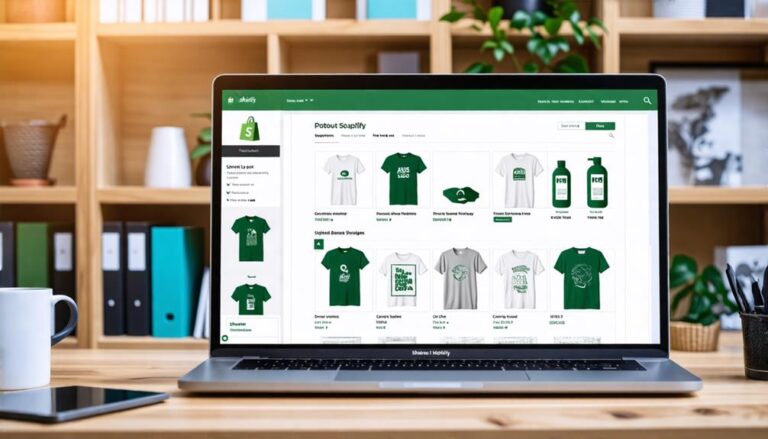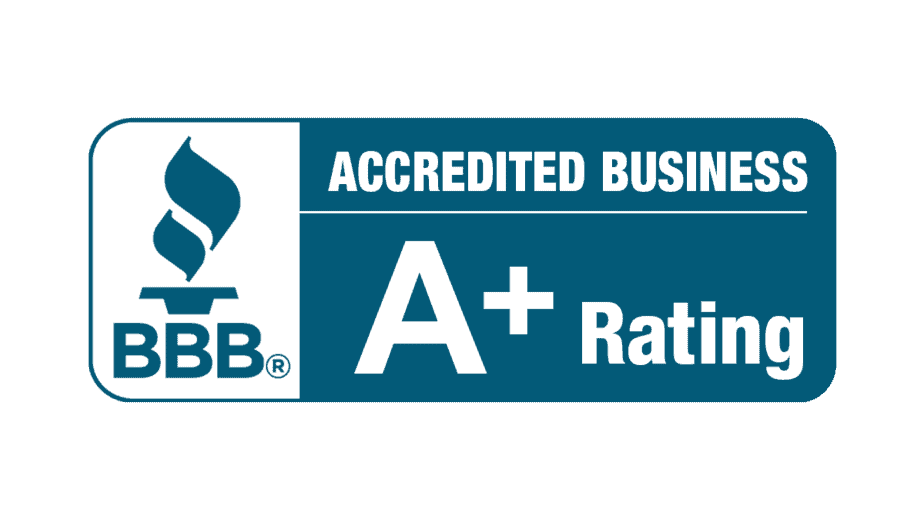Developing keyword research reports for bloggers involves identifying relevant keywords and phrases that target their content to specific audiences. To create a comprehensive report, follow these steps:
- Define Objectives: Determine the blogger's content goals, such as increasing traffic, boosting engagement, or promoting products. This will help guide the research and ensure the report is tailored to their needs.
- Brainstorm Seed Keywords: Use tools like Google Keyword Planner or Ahrefs to generate a list of seed keywords related to the blogger's niche or topic. These keywords will serve as the foundation for further research.
- Conduct Competitor Analysis: Analyze competitors' websites, identifying gaps in their content and areas for improvement. This will help bloggers create unique and relevant content that stands out in the market.
- Utilize Keyword Research Tools: Leverage tools like SEMrush, Moz, or Ubersuggest to analyze keyword metrics, such as search volume, competition, and cost-per-click (CPC). This data will help bloggers prioritize their target keywords.
- Organize and Refine Keywords: Group and categorize keywords based on relevance, intent, and search volume. This will help bloggers identify patterns and opportunities for content creation.
- Create a Keyword Research Report: Compile the research into a comprehensive report, including:
- Target keywords and phrases
- Search volume and competition data
- Recommended content types and formats
By following these steps, bloggers can create a valuable keyword research report that drives content success and amplifies their online presence.
Understanding Keyword Research Importance
Conducting thorough keyword research is an essential step in creating a successful side hustle, particularly in online endeavors such as freelancing, affiliate marketing, or selling digital products.
By analyzing keyword trends and search volume, side hustlers can gain valuable insights into the topics and themes that are currently in-demand and lucrative. This information can be used to craft content that is optimized for search engines and more likely to rank highly in search results, driving organic traffic to their website or platform.
Furthermore, keyword research allows side hustlers to identify gaps in the market and capitalize on opportunities to create unique and relevant products or services. By understanding the keywords and phrases that their target audience is using to search for information, side hustlers can tailor their offerings to meet the specific needs and interests of their audience.
Setting Clear Content Goals
To effectively conduct keyword research, bloggers must establish a clear understanding of their content goals, which involves identifying the specific needs of their target audience and prioritizing content accordingly.
This process enables bloggers to create focused content that resonates with their audience and drives meaningful engagement.
Define Target Audience Needs
Defining the needs of a target audience is crucial for side hustlers to create content that resonates with potential customers and drives engagement. Understanding demographics, such as age, location, and interests, helps side hustlers tailor their content to meet the audience's needs. Recognizing content preferences, including format, tone, and style, also enables side hustlers to create content that aligns with their audience's expectations.
To effectively define target audience needs, consider:
- What problems do they face in the niche or industry? Identify the pain points and challenges potential customers are facing, and create content that offers solutions or products that address those needs.
- What topics are they interested in learning more about? Understand what themes and subjects potential customers are passionate about, and create content that aligns with those interests.
- How do they consume content related to the side hustle? Recognize the formats and channels potential customers prefer, and create content that meets those preferences.
- What are their goals when engaging with the side hustle? Understand what potential customers are trying to achieve, and create content that helps them reach those goals, ultimately driving sales and revenue.
Establish Content Priorities
A well-defined content strategy is key to a successful side hustle. By establishing content priorities, side hustlers can create content that resonates with their target audience, drives engagement, and ultimately generates revenue. To do this, it's essential to identify high-value topics, create evergreen content, fill content gaps, and address audience pain points.
| Content Priority | Description |
|---|---|
| High-Value Topics | Identify topics with high search volume, relevance, and audience engagement potential in the side hustle niche |
| Evergreen Content | Focus on creating timeless content that remains relevant and valuable over time, reducing the need for constant content refreshes |
| Content Gaps | Identify areas where existing content in the side hustle space falls short and create new content to fill those gaps |
| Audience Pain Points | Prioritize content that addresses specific pain points, needs, or interests of the target audience, such as common side hustle challenges or industry trends |
Set Measurable Objectives
Clear side hustle goals are the foundation of a successful side business, providing a roadmap for creating focused, relevant, and engaging services or products that resonate with the target audience and drive measurable results.
By setting measurable objectives, side hustlers can establish a clear direction for their business, guaranteeing it aligns with their overall financial strategy.
To set effective side hustle goals, consider the following:
- Specificity: Clearly define what you want to achieve through your side hustle (e.g., increase monthly sales, generate a certain number of clients, or expand services offered).
- Measurability: Quantify your objectives by setting specific targets (e.g., 25% increase in sales revenue within the next six months).
- Achievability: Ascertain your goals are realistic and attainable based on your resources, skills, and market demand.
- Relevance: Align your side hustle goals with your overall financial objectives to maximize impact.
Brainstorming Seed Keywords
Seed keywords serve as the foundational building blocks of a side hustle's online presence, representing the primary services, products, or topics that freelancers or entrepreneurs aim to promote in their online content.
Effective seed brainstorming is essential to identify relevant and high-impact keywords that resonate with the target audience and set a side hustle apart from the competition. This process involves generating a thorough list of seed keywords through various techniques, such as analyzing industry trends, identifying gaps in existing services or products, and leveraging tools like keyword generators and thesauruses.
During the keyword generation phase, side hustlers should focus on capturing a wide range of potential keywords, including synonyms, antonyms, and related phrases. This helps to create a robust foundation for further research and analysis.
By casting a broad net, side hustlers can increase their chances of discovering valuable and relevant keywords that might not have been immediately apparent, allowing them to refine their online marketing strategy and attract more clients or customers.
The resulting list of seed keywords will serve as a vital input for the next stages of the keyword research process.
Analyzing Keyword Competition
To effectively analyze keyword competition, bloggers must first understand key metrics such as search volume, cost-per-click, and keyword difficulty.
These metrics provide valuable insights into the competitive landscape, enabling bloggers to identify opportunities and challenges.
Understanding Keyword Metrics
Understanding Keyword Metrics for a Thriving Side Hustle
Analyzing keyword competition is a vital step in understanding keyword metrics, enabling side hustlers to gauge the difficulty of ranking for a specific keyword and make informed decisions about their online business strategy.
This involves conducting a thorough metric analysis of keyword trends to assess the competition's strengths and weaknesses. By understanding the competitiveness of a keyword, side hustlers can tailor their online content to achieve maximum impact and drive more traffic to their side hustle.
To gauge keyword competitiveness effectively, side hustlers must examine key indicators. Consider the following critical factors:
- Monthly search volume: Knowing the average monthly search volume indicates potential traffic for your target keyword, helping you determine if it's worth investing time and effort into creating content around it for your side hustle.
- Number of ranking domains: High numbers may imply significant competition for search visibility, making it more challenging for your side hustle to stand out in search results.
- Strength of competing websites: Influences from powerful and experienced entities, possibly including online organizations or authorities, affect position potential in top rank ranges and potentially outrank your side hustle.
- Competition to authority sites' gap: Calculate performance probability considering prominent influencers also target top Google slots from reader query volumes – indicating real potential success scenarios ahead for your side hustle.
Evaluating Competitor Strategies
Examining the strategies of successful side hustlers in your niche can provide valuable insights into the tactics employed by your competitors, revealing potential opportunities to outmaneuver and outearn them. A thorough competitor analysis involves dissecting the strengths and weaknesses of top-performing side hustles, including marketing strategies, pricing models, customer engagement, and product offerings. This analysis can help identify gaps in the market that your side hustle can fill, as well as areas where your competitors are excelling.
To leverage these insights, strategy adaptation is key. By understanding what works for your competitors, you can refine your own approach to better resonate with your target customers. This may involve adjusting your side hustle's unique selling proposition, pricing strategy, or customer service to better align with customer needs.
Additionally, analyzing competitors' marketing channels can inform your own promotional efforts, helping you reach new customers and increase sales. By iteratively refining your strategy through competitor analysis, you can improve your side hustle's visibility, drive more qualified leads, and ultimately increase revenue.
Identifying Long-Tail Opportunities
Pinpointing low-competition phrases is crucial for side hustlers to drive targeted traffic to their online content. Long-tail keywords play a significant role in this process, offering benefits like lower competition and higher conversion rates. By incorporating long-tail keywords into their content, side hustlers can increase the visibility and relevance of their articles, attracting a more focused audience.
To identify long-tail opportunities for a side hustle, consider the following:
- Analyze search volume and competition: Use tools like Google Keyword Planner to gauge search volume and competition for specific keywords related to your niche or service.
- Use keyword modifiers: Append modifiers like 'affordable,' 'local,' or 'online' to broad keywords to create more specific, low-competition phrases that cater to your side hustle.
- Leverage customer inquiries: Analyze customer emails, social media, and phone calls to uncover keywords and phrases that potential clients use when searching for services like yours.
- Utilize keyword clustering: Group related keywords to identify patterns and long-tail opportunities that can help you create targeted content and attract high-quality leads for your side hustle.
Understanding Search Intent Types
For side hustlers, understanding the intent behind a user's search query is crucial to create content that resonates with their target audience and drives meaningful conversions. Search intent, also known as user intent, refers to the purpose or goal behind a user's search query.
Identifying the four primary query types—informational, transactional, navigational, and commercial—helps side hustlers tailor their content to match user intent.
Search Intent Types for Side Hustlers
- Informational Intent: Users seek information or answers to questions, such as how to start a side hustle or understanding the gig economy.
- Transactional Intent: Users intend to make a purchase or complete a transaction, such as buying a course on starting a side hustle.
- Navigational Intent: Users seek a specific website or webpage, such as a side hustler's personal website.
- Commercial Intent: Users research products or services before making a purchase, such as comparing different side hustle courses.
Analyzing search intent allows side hustlers to create content that addresses user needs, fostering a stronger connection with their target audience. This, in turn, enhances the effectiveness of their keyword research and optimization efforts, driving more conversions and revenue for their side hustle.
Creating Buyer Personas
As a side hustler, creating detailed buyer personas is crucial to effectively tailor your content and keyword research to your target audience. A buyer persona is a semi-fictional representation of your ideal customer, encompassing demographics, motivations, and pain points. Understanding these elements allows you to create content that resonates with your audience and addresses their specific needs.
Buyer persona demographics may include age, location, occupation, and education level. Target audience motivations, on the other hand, explore the psychological drivers that influence purchasing decisions related to your side hustle offerings. By understanding what motivates your audience, you can craft compelling content that speaks directly to their desires and concerns.
Developing buyer personas for your side hustle has 4 key benefits:
- Increased empathy: Understanding your target audience's pain points and motivations fosters empathy, allowing you to create content that genuinely supports their needs.
- Improved content relevance: Tailoring content to your target audience increases relevance, engagement, and ultimately, conversion rates.
- Enhanced keyword research: Knowing your target audience's language and search patterns informs keyword research, ensuring that content is optimized for search engines.
- Better ROI: By targeting your ideal customer, you can optimize your content strategy, reducing waste and increasing return on investment in your side hustle.
Using Keyword Research Tools
To effectively conduct keyword research, bloggers must leverage specialized tools designed to identify and analyze relevant keywords.
These tools offer a range of features, including keyword suggestion, competition analysis, and search volume estimation, which empower bloggers to make informed decisions about their content strategy.
Choosing Keyword Research Tools
When it comes to your side hustle, selecting the right keyword research tools is crucial for creating content that resonates with your target audience and drives traffic to your blog. With numerous tools available, it's essential to focus on those that cater to your specific needs.
To streamline your tool selection process, consider the following:
- Identify your niche requirements: Pinpoint the tools that can help you analyze keyword trends, research long-tail keywords, or monitor competitor strategies within your side hustle niche.
- Free or paid options: Weigh the benefits of free tools like Google Keyword Planner against paid tools such as Ahrefs or SEMrush, which offer advanced features and data insights to support your side hustle growth.
- Tool scalability and usability: Choose a tool that can grow with your side hustle and is easy to use, saving you time and effort that can be better spent on content creation and promotion.
- Tool integration and compatibility: Select a tool that seamlessly integrates with your existing side hustle platforms, such as blogging and analytics tools, to streamline your workflow and maximize your productivity.
Keyword Research Tool Features
Effective utilization of keyword research tools is crucial for side hustlers looking to refine their online content strategies and improve search engine rankings. A key feature of these tools is keyword suggestion, which provides a list of relevant keywords related to a specific niche or topic. This helps side hustlers identify potential keywords that may have been overlooked and develop a more extensive content strategy.
Search volume analysis is another essential feature, indicating the average number of searches for a specific keyword within a given timeframe. This data enables side hustlers to prioritize keywords with higher search volumes, increasing the potential for more significant online visibility and attracting more clients or customers to their side hustle.
Many keyword research tools also offer filtering and sorting options, allowing side hustlers to quickly identify the most relevant and high-potential keywords. This capability helps in creating targeted content that resonates with their target audience.
Tool Accuracy and Reliability
To ensure the success of a side hustle, it's crucial to utilize keyword research tools that provide accurate and reliable data. This information directly impacts content strategy and search engine optimization efforts, making tool reliability and data accuracy top priorities.
Side hustlers should consider the following factors to guarantee the accuracy and reliability of keyword research tools:
- User Feedback and Reviews: Analyze user feedback and reviews from multiple sources to gauge the tool's performance and reliability in the context of a side hustle.
- Tool Comparisons and Benchmarks: Compare the tool's performance with industry standards and benchmarks to evaluate its accuracy and reliability in meeting side hustle goals.
- Feature Updates and Integration Options: Assess the tool's update frequency and integration options to guarantee it stays current with the latest trends and technologies relevant to the side hustle.
- Performance Metrics and Limitations: Evaluate the tool's performance metrics, such as keyword coverage and analysis depth, and acknowledge its limitations to guarantee realistic expectations for the side hustle's content strategy and SEO efforts.
Filtering and Prioritizing Keywords
Filtering and prioritizing keywords is a crucial step in optimizing a side hustle blog post for search engines. With a large list of potential keywords from research, it's essential to narrow down the options to the most relevant and high-impact terms.
Keyword clustering is an effective technique for grouping related keywords into clusters, allowing for easier analysis and prioritization. Ensuring semantic relevance is vital in this process, as it ensures that the selected keywords align with the content's meaning and context, ultimately driving targeted traffic to the side hustle blog.
By applying filters such as search volume, competition, and relevance, side hustlers can identify the most promising keywords for their blog post. Prioritizing these keywords involves evaluating their potential impact on the content's visibility and engagement. A data-driven approach enables side hustlers to make informed decisions, allocating resources to the most effective keywords that will drive more leads and sales for their side hustle.
Systematic filtering and prioritization can help distill keyword research into a targeted list of high-potential terms. This refined list will serve as the foundation for optimizing the side hustle blog post, enhancing its discoverability and relevance to the target audience.
Building a Content Strategy
Building a successful side hustle requires a content strategy that effectively integrates keyword optimization with engaging storytelling. By leveraging high-potential keywords, side hustlers can drive targeted traffic and conversions on their blog, increasing the potential for revenue and growth.
A well-crafted content strategy involves identifying gaps in existing content and analyzing trends to determine relevant topics that resonate with the target audience. To boost audience engagement, side hustlers can use topic clustering to create comprehensive content series that showcase their expertise. Utilizing seasonal keywords also helps capitalize on timely topics and interests.
To maximize content potential and grow their side hustle, bloggers should consider the following strategies:
- Content repurposing: Breathe new life into existing content by converting blog posts into videos, podcasts, or social media posts that cater to different audience preferences.
- Voice search optimization: Ensure content is optimized for voice search by incorporating natural language and long-tail keywords that mirror common voice search queries.
- User experience: Prioritize user experience by focusing on content formatting and multimedia integration to create engaging, scannable content that encourages audience interaction.
- Cross-promotion: Share user-generated content and collaborate with influencers or other side hustlers to expand reach, credibility, and potential revenue streams.
Conclusion
Conclusion:
Optimizing content with data-driven keyword research reports is pivotal for bloggers seeking to amplify online presence.
As uncovered trends and search volumes converge, a clear direction for content creation emerges.
Strategic alignment with user intent becomes apparent, illuminating pathways to bolster engagement and achieve content objectives.
Dramatic improvements in online visibility loom on the horizon, awaiting the integration of meticulously crafted keyword research into the fabric of content strategy.
Results hang in the balance.

















































0
View comments